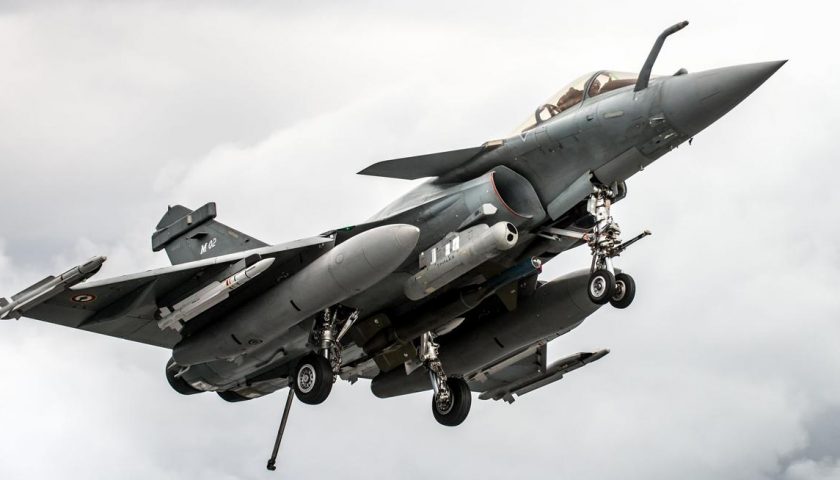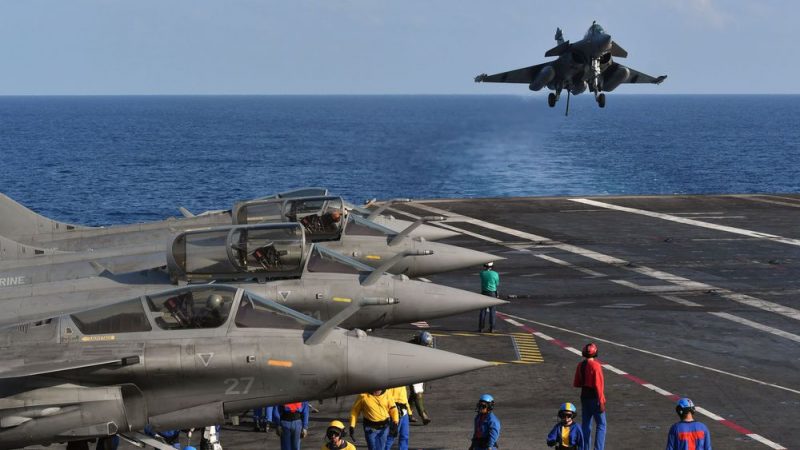In December 2020, French President Emmanuel Macron announced the launch of a new aircraft carrier program for the French Navy. Intended to replace the nuclear aircraft carrier Charles de Gaulle by 2038, this new ship, of which it is currently unknown whether it will include one or two buildings, will be much more imposing than its predecessor, with a length of 300 meters and a displacement of 70.000 tonnes, compared to 261,5 meters and 42.500 tonnes for the Charles de Gaulle, and will be powered by two K-22 nuclear reactors of 220 Megawatt each, where the two K-15s of the CdG only deliver 150 mW, of so as to meet the needs imposed by the new NGF combat aircraft developed as part of the FCAS program, and which will also be more imposing than the Rafale which today equips the combat flotillas of the French Naval Aeronautics. Although sometimes subject to criticism, this program is today essential to maintaining French power projection capabilities, while the country must be able to intervene throughout the planet due to its overseas territories and interests. .
However, whether it is the PAN Charles de Gaulle today, or the PANG from 2038 if the construction of a second ship is not recorded, having a single aircraft carrier is not not without imposing certain restrictions, particularly in terms of availability. During the period preceding the period of Periodic Unavailability to recharge the nuclear reactors and modernize the onboard systems in 2019, the Charles de Gaulle had shown exemplary availability, with more than 240 days in operational mission on the last year. But such a pace, imposed by the tensions in the Eastern Mediterranean and the Levant, cannot be sustained over the long term, whereas in a normal pace, the availability of the French Naval Air Group does not exceed 200 days at sea per year. While international tensions have been growing for several years, in the European zone as well as in the Middle East and in the Indo-Pacific zone, it seems essential to increase this availability so as to offer the French Navy and France the capacity to weigh in on crises and issues. In this article, we will study two approaches likely to provide an answer to this problem in a way that is sustainable from a budgetary point of view, and effective from an operational point of view.
The principle of the double crew
The first approach is also the simplest to implement, since it is based on a solution that has been used for several decades for French nuclear submarines, and more recently for some frigates, staffing these ships with not one, but two crews. The paradigm of this approach is obvious, since it is based on the fact that today, the most restrictive and constraining criterion concerning the keeping at sea of a large naval unit is not technical but human. In other words, it is the fatigue of the crews, and not of the equipment, which forces submarines and frigates to limit the duration of their deployments or of taking operational alerts. In addition, while on-board systems are increasingly complex to maintain and implement, personnel training requirements are greater, requiring longer periods devoted to training for the crews. Since it is more difficult and restrictive to carry out partial personnel rotations on board a ship in combat, and since at the same time, sailors, like all soldiers, today aspire more to preserve a certain space devoted to family life, the human factor is unquestionably the most constraining with regard to the availability at sea of a combat ship.

In this context, relying on a double crew has many advantages. Indeed, by proceeding in this way, it is possible to increase the operational availability of the building by 50%, while reducing the operational pressure on each of the crews by 25%. More concretely, if the PAN Charles de Gaulle must today support an operational activity of 200 days at sea per year, including 40 devoted to the training and qualification of the crews and 160 days in operational deployment, a double crew would make it possible to reach 300 days at sea, i.e. the limit of what the ship can support from a technical point of view, while the training and qualification requirements would only be increased by 20 days, giving it an operational availability of 240 days a year. At the same time, each crew would only be on board 150 days a year, providing greater flexibility to the staff in planning training and drills, while improving the quality of life of the sailors themselves. .
This solution is also relatively economical to implement. Indeed, if the crew of the Charles de Gaulle is strong of 2000 men and women, only 1200 of them actually belong to the aircraft carrier itself, the rest being detached by the General Staff and by the flotillas and squadrons naval aeronautics. In addition, several frigates constituting the escort of the aircraft carrier have already been double-crewed, and the French Navy has ordered 4 new Fleet Supply Ships, the logistics ships that support the carrier's activity. aircraft and assault helicopter carriers, a fleet large enough to support such an increase in operational activity. In other words, the doubling of the crew will only relate to the 1200 crew members of the PAN, while the flotillas and squadrons will only need in such a scenario to increase their manpower. 300 people to support such a pace, i.e. 1.500 new staff with an average budgetary cost of less than €75m per year.

In terms of aerial means, so as to have the optimum means for this revival of activity, it would be welcome, but by no means necessary, to increase the format of on-board hunting by 15 new aircraft, i.e. a new flotilla, and to have an additional E-2D Hawkeye surveillance aircraft, i.e. an additional budget of €1,8 billion that can be spread gradually over several years, so as to reduce its relative weight. It should be noted, ideally, that it could be largely relevant, in such a hypothesis, to oversize the 12F Flotilla specialized in air defense with 5 additional aircraft, and to specialize the new flotilla created in electronic warfare and suppression missions. air defenses, equipping itself with an adapted version of the Rafale for this mission. Thus adorned, on-board naval aeronautics would be highly efficient, and would offer France advanced operational availability for a final cost that is all in all largely sustainable for public finances.
The light escort carrier

75% of this article remains to read,
Subscribe to access it!
The Classic subscriptions provide access to
articles in their full version, and without advertising,
from 6,90 €.
Newsletter subscription
Register for the Meta-Defense Newsletter to receive the
latest fashion articles daily or weekly



[…] […]